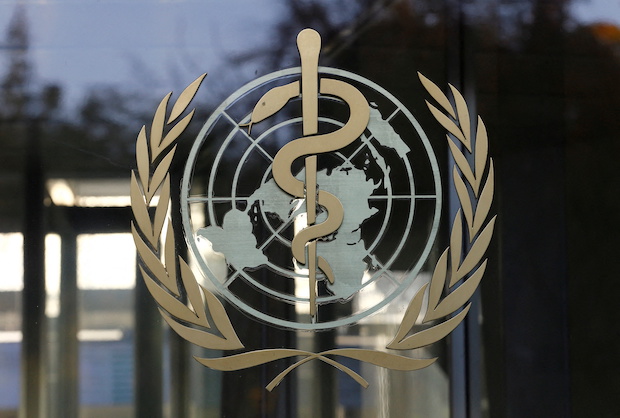Huge volumes of COVID medical waste threaten health – WHO

A logo is pictured on the World Health Organization (WHO) headquarters in Geneva, Switzerland, Nov. 22, 2017. A WHO report says that the COVID medical waste that has piled up since the start of the pandemic poses a threat to health. (REUTERS/Denis Balibouse)
GENEVA — Discarded syringes, used test kits, and old vaccine bottles from the COVID-19 pandemic have piled up to create tens of thousands of metric tons of medical waste, threatening human health and the environment, a World Health Organization report said on Tuesday.
The material potentially exposes health workers to burns, needle-stick injuries, and disease-causing germs, the report said.
“We found that COVID-19 has increased healthcare waste loads in facilities to up to 10 times,” Maggie Montgomery, a WHO technical officer, told Geneva-based journalists.
She said the biggest risk for affected communities was air pollution caused by burning waste at insufficiently high temperatures leading to the release of carcinogens.
The report calls for reform and investment including the reduction in the use of packaging that has caused a rush for plastic and the use of protective gear made from reusable and recyclable materials.
The WHO report estimates that some 87,000 metric tons of personal protective equipment (PPE), or the equivalent of the weight of several hundred blue whales, have been ordered via a UN portal up until Nov. 2021 — most of which is thought to have ended up as waste.
The report also mentions some 140 million test kits with a potential to generate 2,600 tonnes of mostly plastic trash and enough chemical waste to fill one-third of an Olympic swimming pool.
In addition, it estimates that some 8 billion vaccine doses administered globally have produced an additional 144,000 tonnes of waste in the form of glass vials, syringes, needles, and safety boxes.

Too many moonsuits
Montgomery said a misperception about the rates of COVID-19 infection from surfaces was to blame for what she called the “overuse” of protective gear, particularly gloves.
“We’ve all seen photos of the moonsuits, we’ve all seen photos of people vaccinating with gloves,” she said.
“Certainly across the board… people are wearing excessive PPE,” she added.
The WHO report did not name specific examples of where the most egregious build-ups occurred but referred to challenges such as the limited waste treatment and disposal in rural India as well as large volumes of fecal sludge from quarantine facilities in Madagascar.
Even before the pandemic, around a third of healthcare facilities were not equipped to handle existing waste loads, the WHO said. That was as high as 60% in poor countries, it said.
RELATED STORIES
7 kids get COVID after playing with medical waste in Catanduanes
Sarangani taps eco-friendly Pyroclave technology to treat medical waste, curb COVID-19
India faces growing biomedical waste crisis as coronavirus cases soar